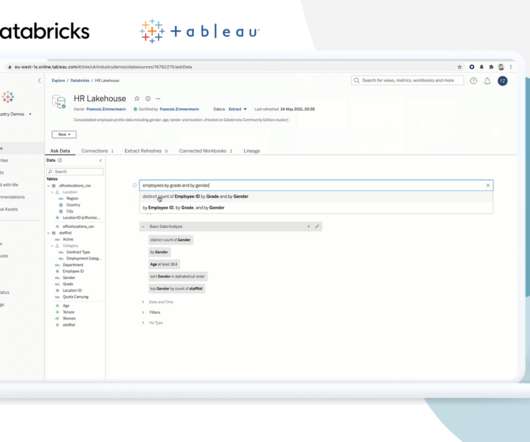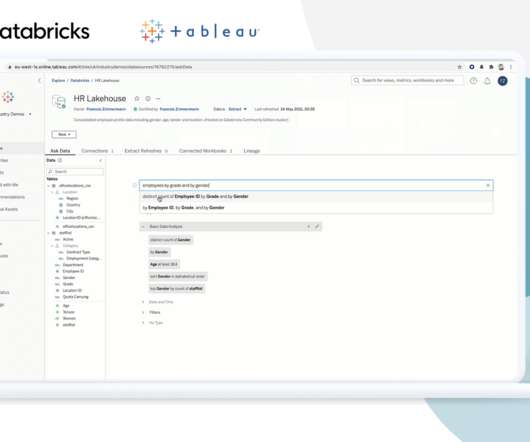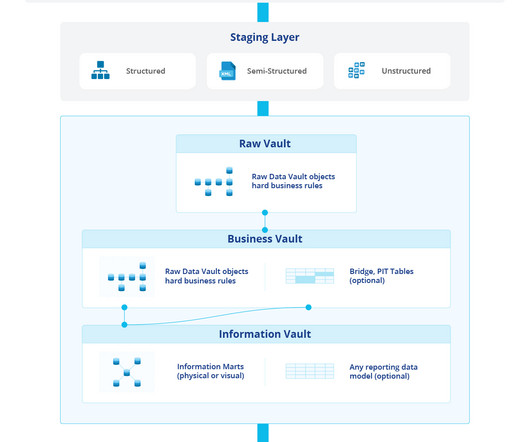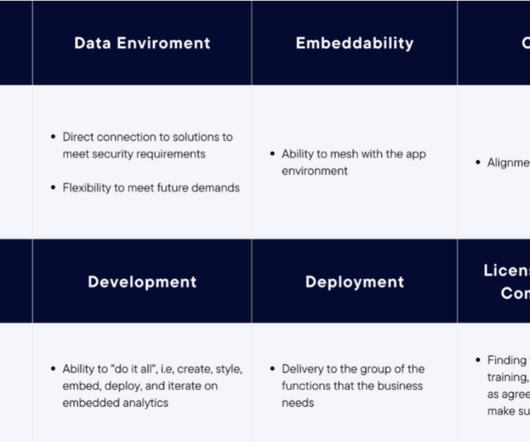Determining Business Intelligence Requirements That Will Delight Your Customers
Insight Software
JANUARY 17, 2022
Business intelligence requirements in this category may include dashboards and reports as well as the interactive and analytical functions users can perform. Consider whether you need to personalize visualizations, let users kick off workflows, or drill down into information. End-User Experience.

















Let's personalize your content